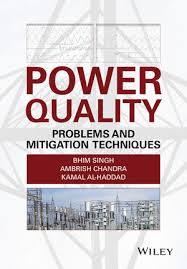Power Quality Problems and Mitigation Techniques: A Comprehensive Overview
Introduction
Power quality refers to the characteristics of the electrical power supply that can affect the performance of electrical equipment and systems. Power quality problems can lead to various issues, including equipment malfunctions, reduced efficiency, and increased maintenance costs. This white paper explores common power quality problems and mitigation techniques to ensure reliable and efficient electrical systems.
Common Power Quality Problems
- Voltage Sags and Swells:
- Voltage Sags: Short-duration decreases in voltage magnitude.
- Voltage Swells: Short-duration increases in voltage magnitude.
- Causes: Motor starting, switching operations, and faults.
- Effects: Malfunction of sensitive electronic equipment, data loss, and system instability.
- Voltage Fluctuations:
- Continuous or intermittent variations in voltage magnitude.
- Causes: Poor power system regulation, nonlinear loads, and unbalanced loads.
- Effects: Reduced equipment life, overheating, and inaccurate metering.
- Harmonic Distortion:
- Presence of harmonic frequencies in the power supply.
- Causes: Nonlinear loads, such as rectifiers and inverters.
- Effects: Overheating of transformers and motors, increased power losses, and interference with communication systems.
- Transients:
- Short-duration, high-amplitude voltage or current spikes.
- Causes: Lightning strikes, switching operations, and motor starting.
- Effects: Damage to electronic equipment, data corruption, and system failures.
- Power Frequency Variations:
- Deviations from the nominal power frequency (50 or 60 Hz).
- Causes: System disturbances, load imbalances, and generator speed variations.
- Effects: Malfunction of time-critical equipment, inaccurate metering, and reduced motor efficiency.
Mitigation Techniques
- Power Conditioning Equipment:
- Voltage Regulators: Maintain a stable voltage level by boosting or reducing voltage.
- Uninterruptible Power Supplies (UPS): Provide clean, uninterrupted power to critical loads.
- Power Line Conditioners: Filter out harmonics, transients, and noise.
- Power System Design and Operation:
- Balanced Load Distribution: Reduce harmonic distortion and voltage imbalance.
- Proper Motor Starting Techniques: Minimize voltage sags and transients.
- Effective Power Factor Correction: Improve power system efficiency and reduce harmonic distortion.
- Power Quality Monitoring:
- Continuous Monitoring: Track power quality parameters to identify potential problems.
- Real-Time Analysis: Analyze power quality data to take corrective actions.
- Alarm Systems: Alert operators to critical power quality events.
- Effective Grounding and Shielding:
- Minimize the impact of electromagnetic interference (EMI) and transients.
- Ensure proper grounding of equipment to prevent electrical shock hazards.
Conclusion
Power quality problems can significantly impact the reliability and efficiency of electrical systems. By understanding the causes and effects of these problems, and implementing appropriate mitigation techniques, organizations can improve the overall performance of their electrical infrastructure. Regular power quality monitoring, combined with effective power conditioning equipment and good power system design practices, is essential to maintain a high level of power quality.
References
- Singh, M. D. (2009). Power System Analysis and Design. Wiley.
- IEEE Standard 519-2014: IEEE Recommended Practices and Requirements for Harmonic Control in Electrical Power Systems.
- IEEE Standard
- Electric Power Research Institute (EPRI):
Would you like to delve deeper into a specific power quality problem or mitigation technique?



